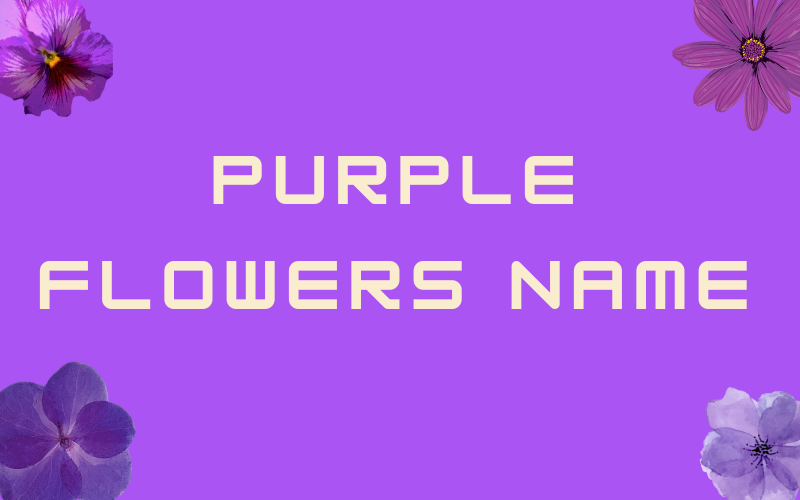Purple flowers name come in a variety of shades, from deep violet to soft lavender, and they are often associated with elegance, grace, and refinement. Popular purple flowers include the lilac, which blooms in spring and is fragrant; hydrangeas, which can be found in blue pink and purple; iris, of peculiar shape, commonly used in wreaths and wreaths; and pansies, small delicate flowers often used for borders and window boxes.
Other purple flowers include verbena, which has a long, slender stem and small, slender flowers; Clematis is a climber with large flowers; and petunias, which vary from pale lavender to deep red. Whether you want to add a touch of beauty to your garden or just enjoy the beauty of nature, there are plenty of purple flowers.
Alpine Betony
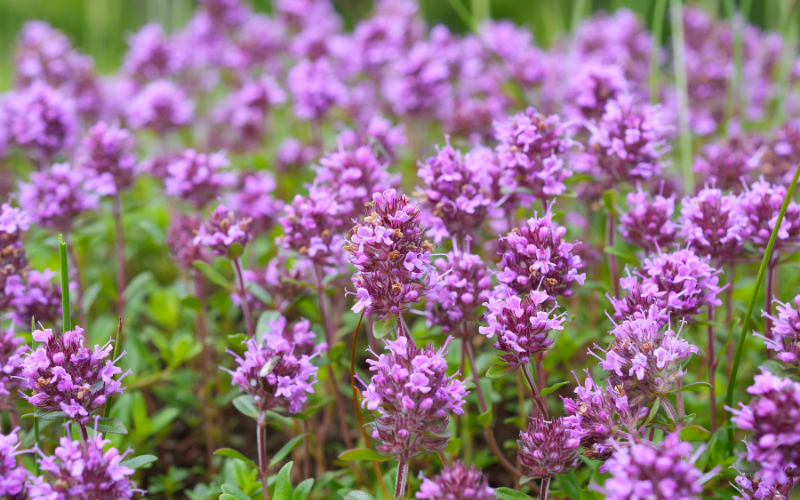
Alpine Betony is a stunning perennial plant that is native to the mountains of Europe. This plant produces spikes of bright purple flowers that bloom from late spring until early fall. The flowers are fragrant and attract bees and butterflies to your garden.
The foliage is also quite attractive with its green, glossy leaves that form a dense rosette at the base of the plant. Alpine Betony is a hardy plant that can tolerate extreme temperatures, making it an ideal choice for mountain gardens or areas with harsh weather conditions. The plant prefers well-drained soil and full sun to partial shade. Alpine Betony is easy to care for and requires minimal maintenance, making it a great choice for beginner gardeners.
| Scientific Name | Stachys |
| Native Range | Europe, western Asia, and Northern Africa |
| Flowering Season | Summer |
Bear’s Breeches
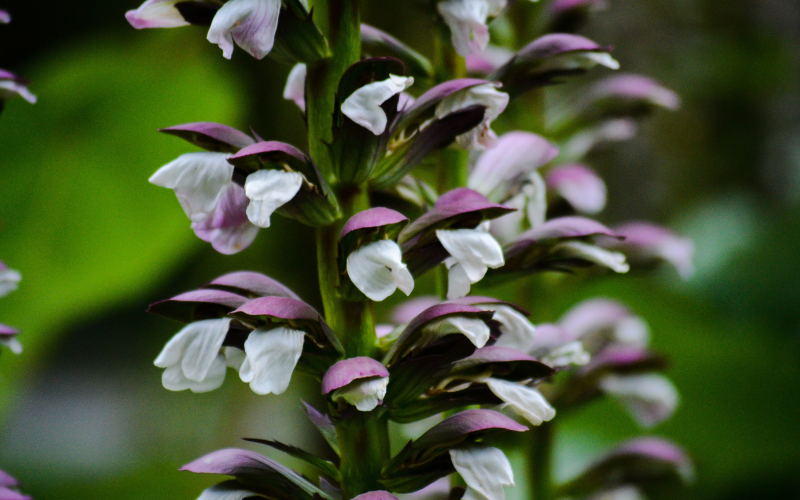
Bear’s Breeches (Acanthus mollis) is a beautiful flowering plant native to the Mediterranean region, known for its striking foliage and stunning flowers that bloom in shades of white, pink, and purple.
The plant is named after its large, glossy, and deeply lobed leaves resembling a bear’s paw, and it can grow up to four feet tall and wide. Bear’s Breeches thrives in full sun to light shade and prefers well-draining soil. The plant is easy to care for and requires regular watering during its growing season. The plant has also been used for medicinal purposes since ancient times to treat various ailments such as wounds, fever, and urinary tract infections.
| Scientific Name | Acanthus mollis |
| Native Range | Mediterranean region from Portugal and northwest Africa east to Croatia |
| Flowering Season | Late spring into early summer |
Bee Orchid

The Bee Orchid, also known as Ophrys apifera, is a unique and fascinating flower that is found in many parts of Europe including the Mediterranean region. This orchid gets its name from its flower, which resembles a bee, making it an incredible example of natural mimicry.
The Bee Orchid blooms in late spring and early summer and can be found in a variety of habitats such as meadows, hedgerows, and woodland edges. This orchid is a perennial plant that grows from an underground tuber and can reach a height of 10 to 50cm. The Bee Orchid is pollinated by male bees, who are attracted to the flower by its bee-like appearance and the scent that it emits.
| Scientific Name | Ophrys apifera |
| Native Range | Europe including the Mediterranean region |
| Flowering Season | Late spring and early summer |
Butterfly bush
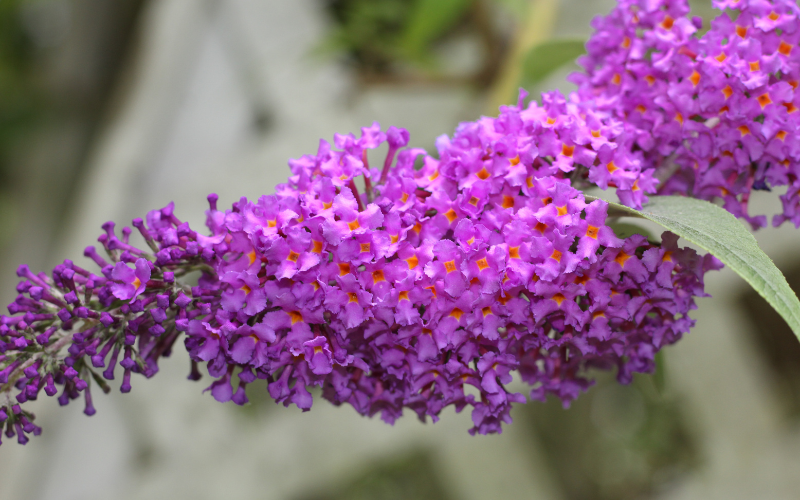
The butterfly bush is a beautiful flowering plant that is popular among gardeners and nature enthusiasts alike. These bushes can grow to be quite large, with some varieties reaching up to ten feet tall, making them an excellent choice for adding height and texture to your garden.
The plant’s name is derived from the fact that it is a magnet for butterflies, which are attracted to the sweet nectar produced by its flowers. Butterfly bushes come in various colors, including pink, purple, white, and blue. They are easy to care for, require minimal maintenance, and can thrive in a variety of soil types and weather conditions.
| Scientific Name | Buddleja |
| Native Range | Sichuan and Hubei provinces in central China, and also Japan |
| Flowering Season | Summer to autumn |
Purple Candytuft

Purple Candytuft is a beautiful flowering plant that belongs to the Brassicaceae family. It is known for its delicate purple flowers that bloom in clusters during the spring months. The plant grows to be about 8 inches tall and spreads about 12 inches wide, making it a great addition to any garden or landscape.
Purple Candytuft is a hardy plant that can tolerate different soil types, but it prefers well-drained soil and full sun exposure. It is also drought-tolerant once established, making it a low-maintenance plant that is easy to care for.
| Scientific Name | Iberis umbellata |
| Native Range | Europe |
| Flowering Season | Late summer |
Dianthus
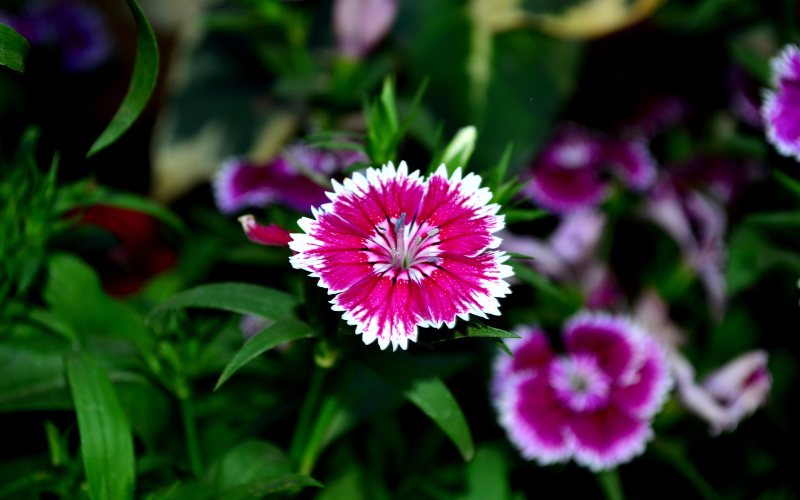
Dianthus is a beautiful and popular flower that is known for its delicate petals and sweet fragrance. It is part of the carnation family and comes in a range of vibrant colors such as pink, white, red, and purple.
Dianthus is an easy plant to care for and is perfect for adding a pop of color to any garden or flower bed. It prefers well-draining soil and requires moderate watering, making it an ideal choice for those who don’t want to spend too much time in their garden.
| Scientific Name | Dianthus |
| Native Range | Europe and Asia |
| Flowering Season | Summer |
False Indigo

False Indigo is a stunning plant that produces clusters of deep blue, purple, and violet flowers. It is a hardy perennial that is native to North America and is often used in landscaping as well as for medicinal purposes.
False Indigo is a member of the legume family and its root system has the ability to fix nitrogen in the soil, making it a valuable plant for improving soil fertility. In addition to its beauty, False Indigo is also known for its medicinal properties. It is also used as a natural dye, with the roots producing a blue dye that has been used for coloring fabrics.
| Scientific Name | Baptisia |
| Native Range | Central and Eastern North America |
| Flowering Season | Spring |
Hellebores
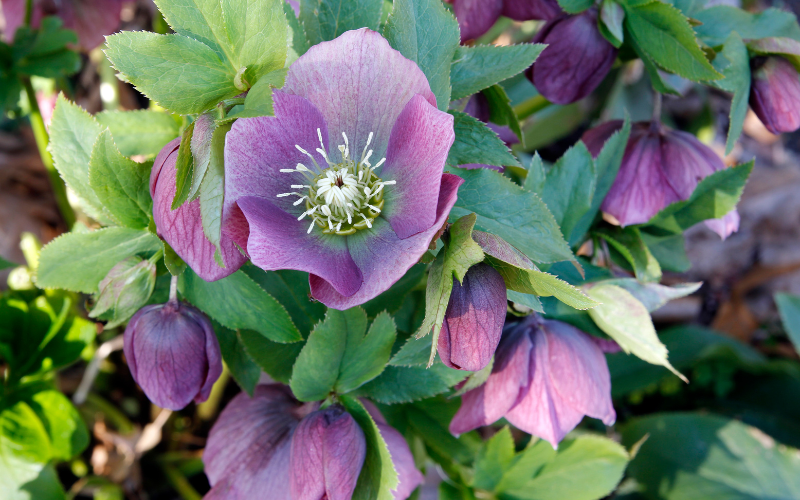
Hellebores are a beautiful and unique type of perennial flower that blooms in late winter or early spring. They are also known as the Christmas rose or Lenten rose because of their ability to flower during the holiday season.
Hellebores are known for their delicate flowers which come in a range of colors, including white, pink, purple, and even green. These flowers are also known for their long-lasting beauty, and they can bloom for over two months. Hellebores are also deer-resistant, making them a great choice for gardens that are frequented by wildlife.
| Scientific Name | Helleborus |
| Native Range | The British Isles, east through Europe and farther into Turkey and then China |
| Flowering Season | Winter until spring |
Purple hydrangea
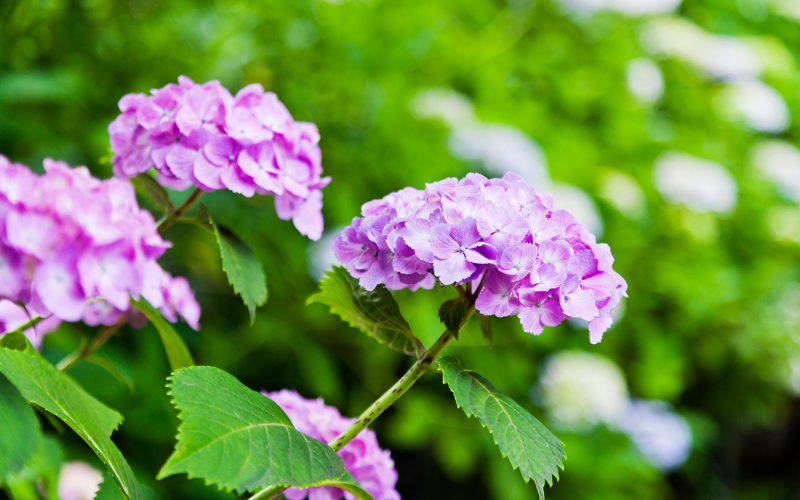
Purple hydrangea flowers are a stunning addition to any garden or floral arrangement. They are known for their large clusters of flowers that can range from pale lavender to deep violet in hue. The color of the flowers is dependent on the acidity of the soil they are planted in, with more alkaline soil producing pink flowers and more acidic soil producing blue flowers.
They are a popular choice for weddings and other special occasions and are often used in bouquets and centerpieces. Whether in a garden or in a vase, purple hydrangeas add a touch of elegance and sophistication to any setting.
| Scientific Name | Hydrangea macrophylla |
| Native Range | Asia and the Americas |
| Flowering Season | Early summer into early fall |
Purple Lupine
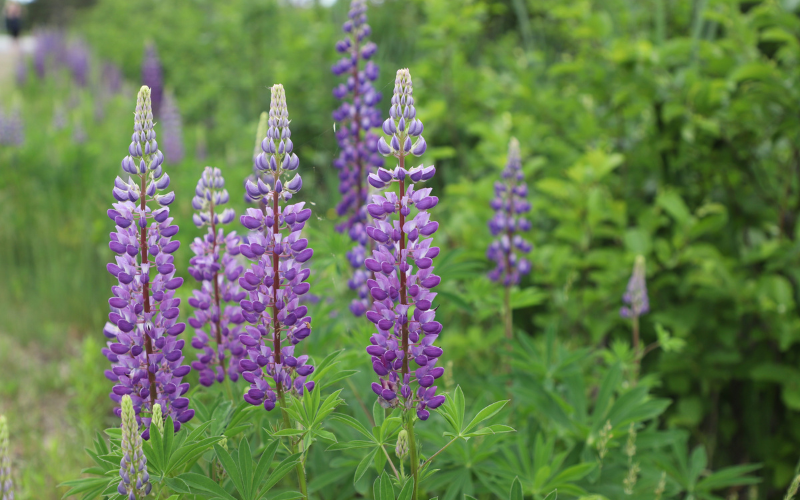
Purple Lupine, also known as Lupinus, is a beautiful and vibrant flowering plant that is native to North America. It is often seen growing in the wild in fields, meadows, and along roadside verges. The plant gets its name from the Latin word “lupus,” meaning “wolf,” as it was once thought that the plant depleted the soil of nutrients in a similar way to how wolves were known to deplete the resources of their prey.
It is also a popular choice for gardeners, as it is easy to grow and attracts bees, butterflies, and hummingbirds. In addition to being visually stunning, Purple Lupine has also been used for medicinal purposes by indigenous people for centuries and is believed to have anti-inflammatory and pain-relieving properties.
| Scientific Name | Lupinus polyphyllus |
| Native Range | North America |
| Flowering Season | Late spring to early summer |
Allium
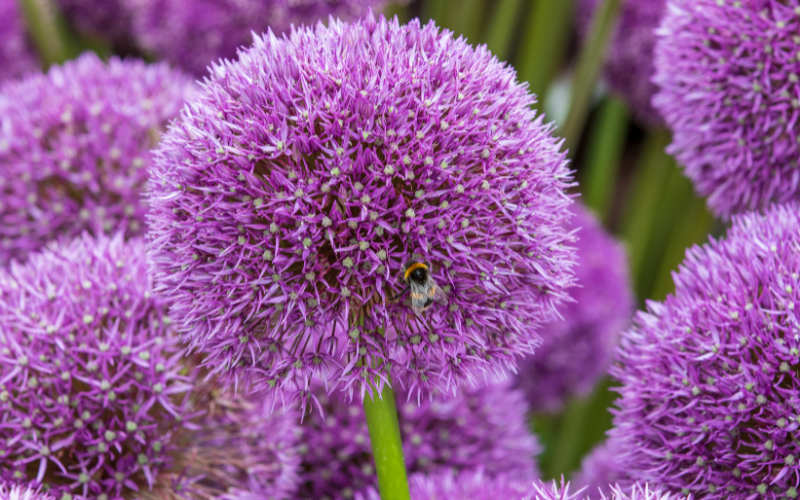
The Allium is a stunning and unique flower. It is also known as the ornamental onion. It belongs to the Amaryllidaceae family. The Allium flowers come in various colors, including purple, lavender, pink, white, yellow, and blue.
The blooming season for Allium flowers typically occurs in late spring to early summer. The allium flowers are also beneficial for pollinators, attracting bees and butterflies.
| Scientific Name | Allium sativum |
| Native Range | Northern Hemisphere |
| Flowering Season | Late spring to early summer |
Purple Anemone

The Purple Anemone is a beautiful and popular flower. It is scientifically known as Anemone coronaria. It is native to the Mediterranean region. It comes in a variety of colors, including white, pink, red, and blue.
Purple Anemone Flowers typically bloom in early to mid-spring. This flowering plant grows from corms (bulb-like structures) and usually reaches a height of about 8 to 12 inches (20 to 30 cm).
| Scientific Name | Halcampoides purpureus |
| Native Range | North America, Asia, Europe |
| Flowering Season | Spring, summer, fall |
Anise Hyssop

Anise Hyssop is a stunning flowering plant. It is also known as Agastache foeniculum. It is native to North America. The Anise Hyssop plant typically grows to a height of 2 to 4 feet (60 to 120 cm).
The flowers are tubular and two-lipped, with vibrant purple-blue to lavender color. It blooms from mid-summer to early fall, providing a late season.
| Scientific Name | Agastache foeniculum |
| Native Range | North America |
| Flowering Season | Summer |
Purple Aster

The Purple Aster is a charming flower. It is scientifically known as Aster novi-belgii (New York Aster). The flowers are usually 1 to 2 inches (2.5 to 5 cm) in diameter and grow in dense clusters atop sturdy stems.
Purple Asters bloom from late summer through fall. Purple Asters prefer full sun to light shade and well-draining soil. They are relatively easy to grow and require minimal maintenance once established.
| Scientific Name | Symphyotrichum patens |
| Native Range | North America |
| Flowering Season | Late summer or early fall |
Bell Heather
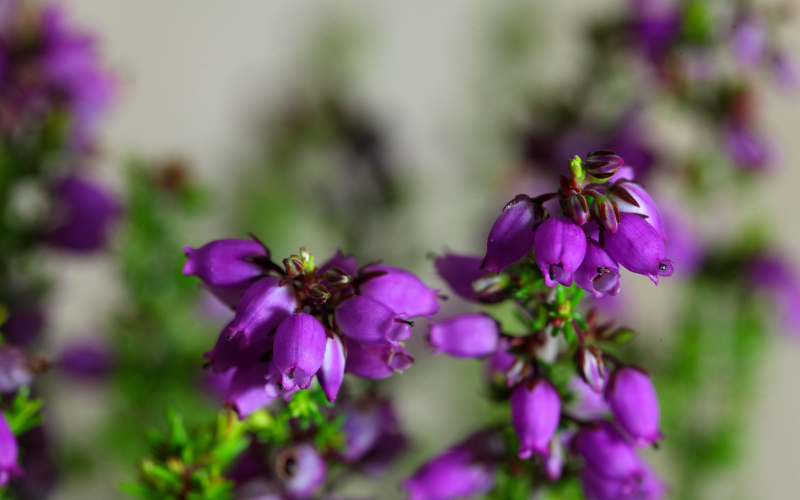
The Bell Heather flower is a stunning plant. It is also known by its scientific name Erica cinerea. It is a low-growing evergreen shrub native to parts of Europe, including the United Kingdom. It typically grows to a height of about 12 to 18 inches (30 to 45 cm).
Bell Heather produces an abundance of bell-shaped flowers in late summer and early autumn. The flowers are typically pink to purple in color, though some varieties may have white or red blooms.
| Scientific Name | Erica cinerea |
| Native Range | Europe |
| Flowering Season | Late spring through late summer |
Bittersweet Nightshade
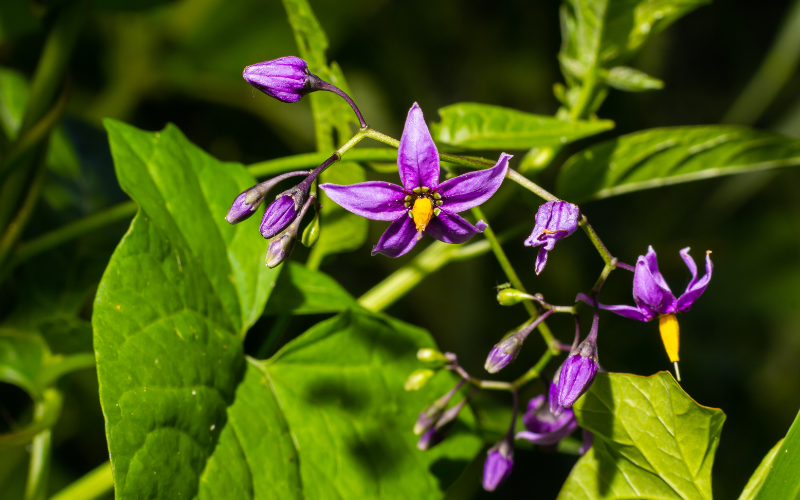
The Bittersweet Nightshade is a beautiful flower. It is scientifically known as Solanum dulcamara. It is native to Europe, Asia, and North America. Bittersweet Nightshade is a climbing vine that can grow up to 6 to 10 feet (2 to 3 meters) in length.
The flowers are star-shaped and usually have purple or violet petals with a yellow center. It has been used in traditional remedies for various ailments such as skin conditions, respiratory issues, and even rheumatism.
| Scientific Name | Solanum dulcamara |
| Native Range | Europe, Asia, and North America |
| Flowering Season | Late spring through late summer |
Blackcurrant Swirl Moonflower
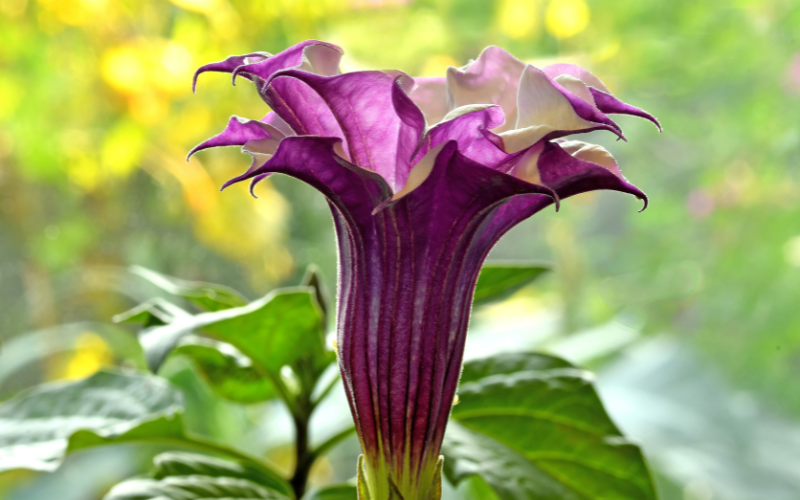
The Blackcurrant Swirl Moonflower is an exquisite flowering plant. This enchanting flower is renowned for its deep purple petals that gracefully unfurl, revealing a mesmerizing swirl of blackcurrant hues.
It is a true marvel of nature, combining elegance and vibrancy in one stunning bloom. This unique flower blooms at night, releasing a delicate and appealing aroma that fills the air with mystery and allure.
| Scientific Name | Datura metel |
| Native Range | Asia, Africa, Americas |
| Flowering Season | Summer Late summer or early fall Fall |
Blue-Eyed Grass

The blue-eyed grass flower is a stunning and delicate plant. It is also known as Sisyrinchium. It is native to North and South America. The flowers of blue-eyed grass can vary in color, ranging from pale blue to violet or lavender.
Blue-eyed grass generally grows to a height of 6 to 18 inches (15 to 45 cm), depending on the species and growing conditions. Blue-eyed grass is adaptable to different growing conditions.
| Scientific Name | Sisyrinchium angustifolium |
| Native Range | North or South America |
| Flowering Season | Late spring into early summer |
Canterbury Bells
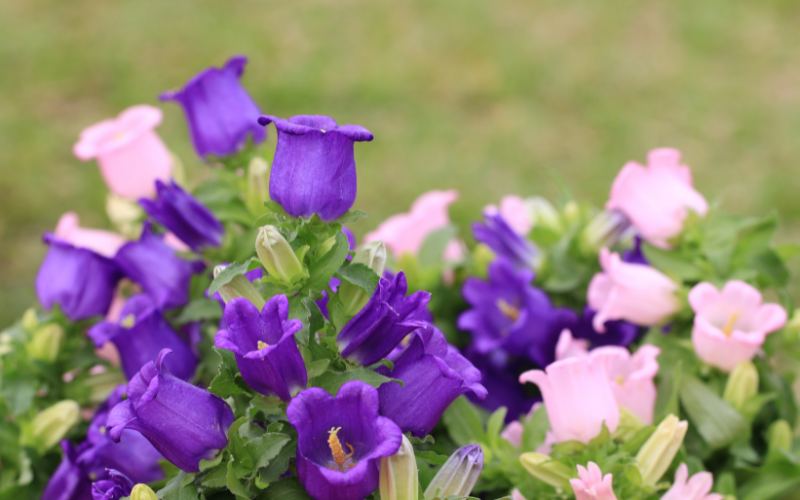
The Canterbury Bells is a beautiful flower. It is scientifically known as Campanula medium. It is Native to Southern Europe. They have tall, erect stems that can reach heights of 2 to 3 feet (60 to 90 cm).
The flowers come in various colors, including shades of blue, violet, pink, and white. Canterbury Bells typically bloom in late spring to early summer. Canterbury Bells prefer well-draining soil and a location with full sun to partial shade.
| Scientific Name | Campanula medium |
| Native Range | Southern Europe |
| Flowering Season | Summer |
Purple Catmint
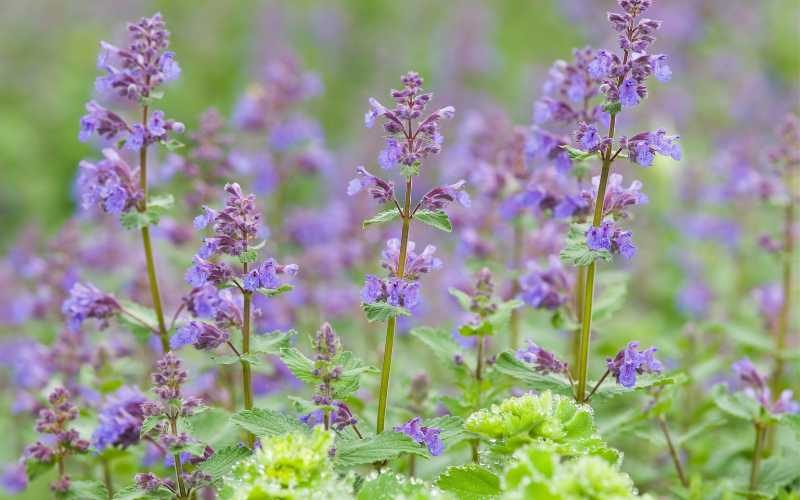
The Purple Catmint is a delightful flowering plant. It is scientifically known as Nepeta mussinii or Nepeta faassenii. The Purple Catmint belongs to the Lamiaceae family.
The flower color can vary slightly, ranging from lavender to purple, hence the name “Purple Catmint.”This plant forms compact hills that usually reach a height of about 12 to 18 inches (30 to 45 cm) and spread up to 18 to 24 inches (45 to 60 cm) wide.
| Scientific Name | Nepeta Purple Prelude |
| Native Range | Europe, Asia, Africa |
| Flowering Season | Spring, Summer |
Balloon
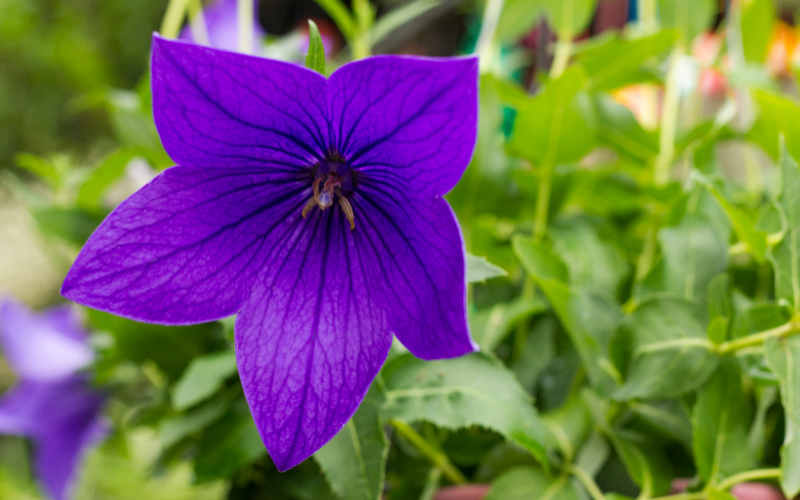
The balloon flower is a fascinating and unique plant. It is also known as Platycodon grandiflorus. It is native to East Asia, particularly China, Korea, and Japan.
The flowers come in various colors, including blue, purple, white, and pink. It typically reaches a height of about 1 to 2 feet (30 to 60 cm) and has a spread of about 1 foot (30 cm). The Balloon Flower’s flowering season is in late spring to early summer.
| Scientific Name | Verbena |
| Native Range | Europe |
| Flowering Season | Summer |
Salvia
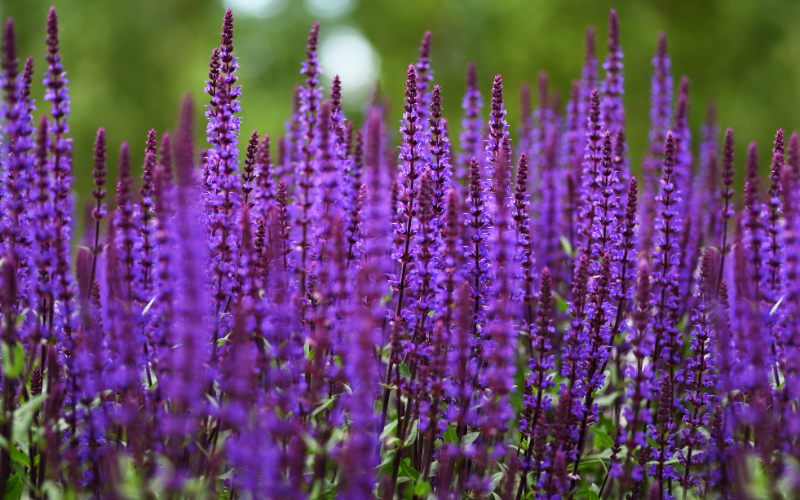
Salvia is a beautiful and versatile flowering plant. It is native North and South America, Europe, Asia, and Africa. Salvia flowers come in various colors, including shades of blue, purple, red, pink, white, and even yellow.
The flowering season for Salvia can vary depending on the species and local climate. In general, Salvia plants bloom during the warm months, typically from late spring through summer and sometimes into fall.
| Scientific Name | Salvia |
| Native Range | Mediterranean |
| Flowering Season | Early spring to late autumn |
Monkshood
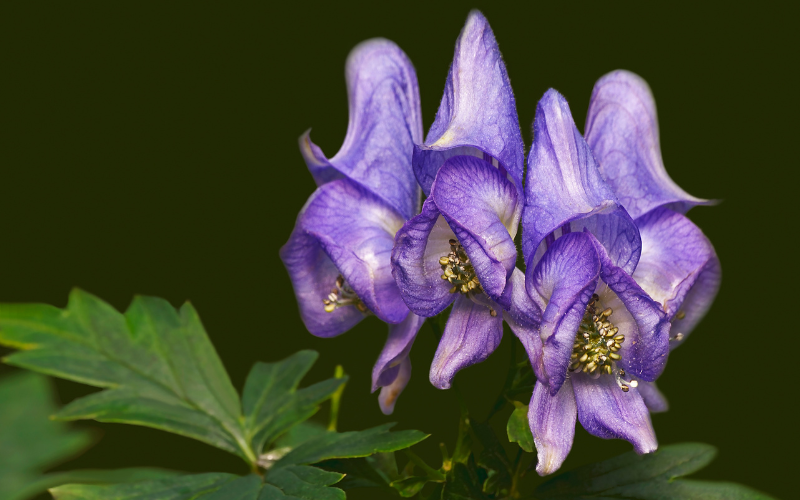
Monkshood is a stunning flower. It is also known as Aconitum. It is native to the mountainous regions of Europe and Asia. The flowers can be various shades of blue, purple, white, or yellow, depending on the species.
They can reach heights of 2 to 6 feet (0.6 to 1.8 meters) or more, depending on the species. Monkshood prefers cool and moist growing conditions. They typically thrive in partially shaded areas with well-draining soil.
| Scientific Name | Aconitum |
| Native Range | Western and Central Europe |
| Flowering Season | Late in the summer and fall |
Carnations

Carnation is a popular and charming flowering plant. The flowers come in a wide range of colors, including white, pink, red, yellow, orange, and bi-colors. Carnations grow as clumps of grass-like or lance-shaped leaves.
They typically reach heights of 1 to 2 feet (30 to 60 cm) and have sturdy stems that support the flowers. They bloom during late spring and summer.
| Scientific Name | Dianthus caryophyllus |
| Native Range | Mediterranean |
| Flowering Season | Late spring |
Sea Thistle
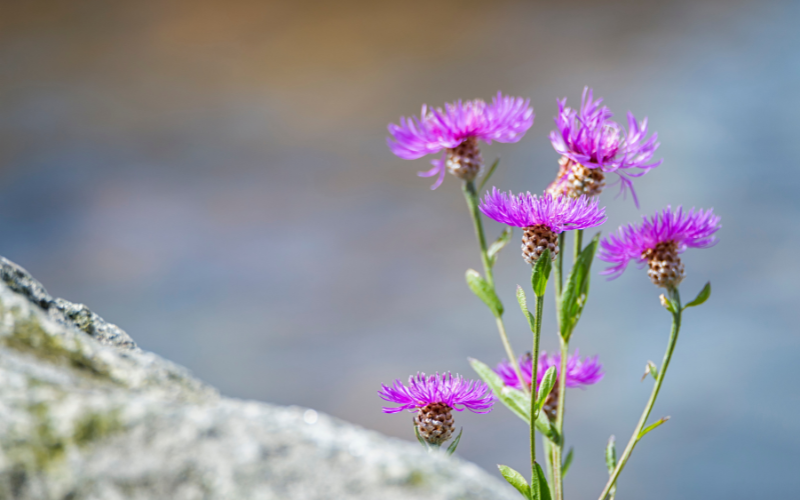
The sea thistle is a striking and unique flower. It is native to the coastal regions of Europe. Sea thistle is an herbaceous perennial plant with an upright and branching growth habit.
It can reach heights of up to 2 to 3 feet (60 to 90 cm). It typically blooms in the summer months. The Sea Thistle flower is a true symbol of coastal beauty and resilience.
| Scientific Name | Eryngium |
| Native Range | Europe, Asia |
| Flowering Season | Summer, Fall |
Cosmos
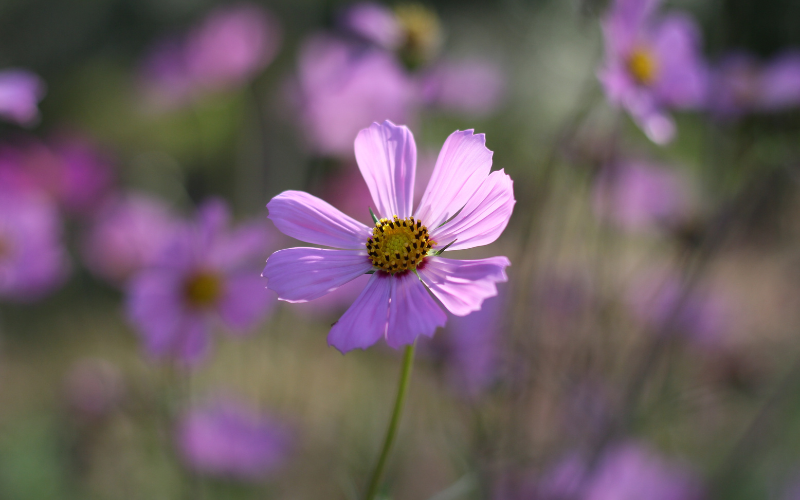
Cosmos is a beautiful flower. It is native to Mexico and parts of North and South America. The flowers come in a wide range of colors, including shades of white, pink, purple, magenta, and various hues of red and orange.
They typically reach heights of 2 to 4 feet (60 to 120 cm), depending on the variety. The flowering season for Cosmos is from early summer to fall.
| Scientific Name | Cosmos |
| Native Range | Mexico |
| Flowering Season | Early summer |
Cyclamen

Cyclamen is a charming flowering plant. It is native to parts of Europe, the Mediterranean, and parts of the Middle East. The flowers come in various colors, including shades of pink, purple, red, white, and bi-colors.
They bloom during the cooler months of late winter, spring, or early fall, depending on the region and growing conditions. Cyclamen prefers bright, indirect light and cool temperatures.
| Scientific Name | Cyclamen |
| Native Range | Europe to Iran, and Northeast Somalia |
| Flowering Season | Fall, Winter, and Spring |
Fuchsia
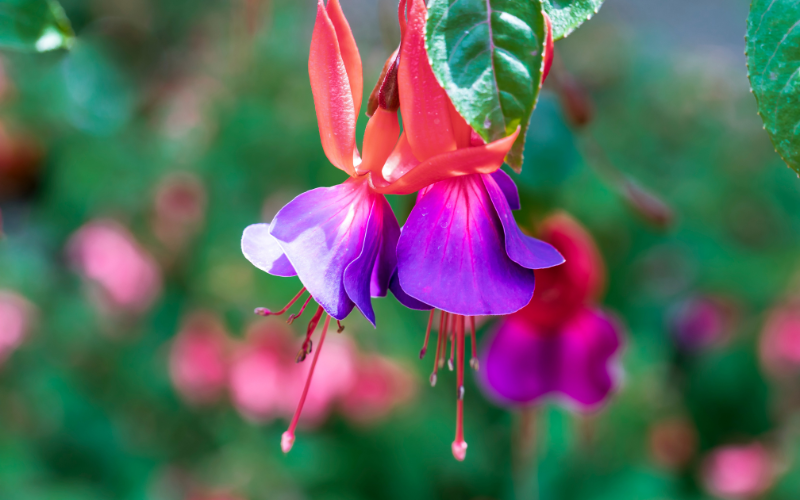
The fuchsia is a captivating and unique flower. Fuchsia plants are native to Central and South America, with some species also found in New Zealand and the islands of the Pacific Ocean.
Fuchsia plants can reach heights of 1 to 10 feet (30 cm to 3 meters), depending on the variety. Fuchsia plants typically bloom from late spring to fall, depending on the species and growing conditions.
| Scientific Name | Fuchsia |
| Native Range | South America, with a few from Mexico and Central America and some from New Zealand and Tahiti |
| Flowering Season | Late spring or early summer |
Gladiolus
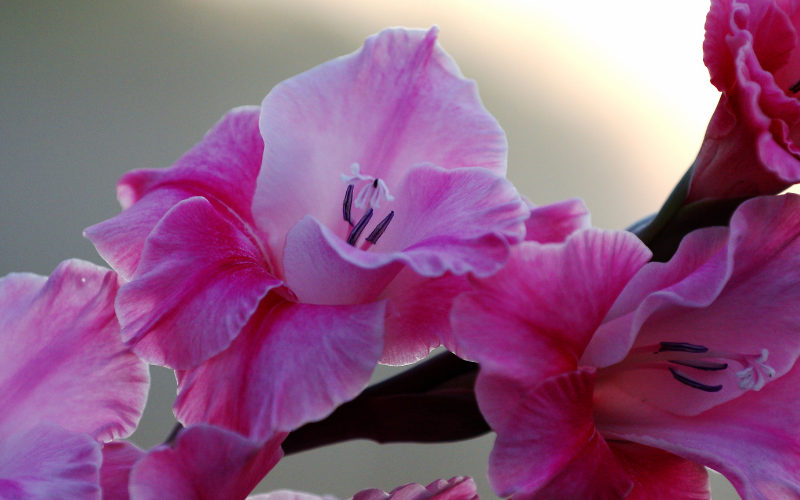
The gladiolus is a stunning and majestic flower. It is also known as a sword lily. It is native to Africa, particularly South Africa, and some parts of Asia and the Mediterranean region.
The flowering stalk, or “spike,” emerges from the center of the foliage and can reach varying heights, depending on the variety, ranging from 2 to 6 feet (60 to 180 cm). They generally bloom in the summer, while in warmer regions, they may bloom in late spring or early fall.
| Scientific Name | Gladiolus |
| Native Range | South Africa but also found in the Mediterranean, Arabian Peninsula, northwestern Africa and eastern Africa |
| Flowering Season | Winter |
Lisianthus

The Lisianthus is a beautiful flower. It is also known as Texas Bluebell or Prairie Gentian. It is native to parts of the southern United States and Mexico.
The flowers come in various colors, including shades of white, pink, lavender, purple, and blue. They bloom during the late spring to early summer months and may continue to produce flowers into the fall under favorable conditions.
| Scientific Name | Eustoma |
| Native Range | Northern Mexico north to Colorado and Nebraska |
| Flowering Season | Summer |
Delphinium
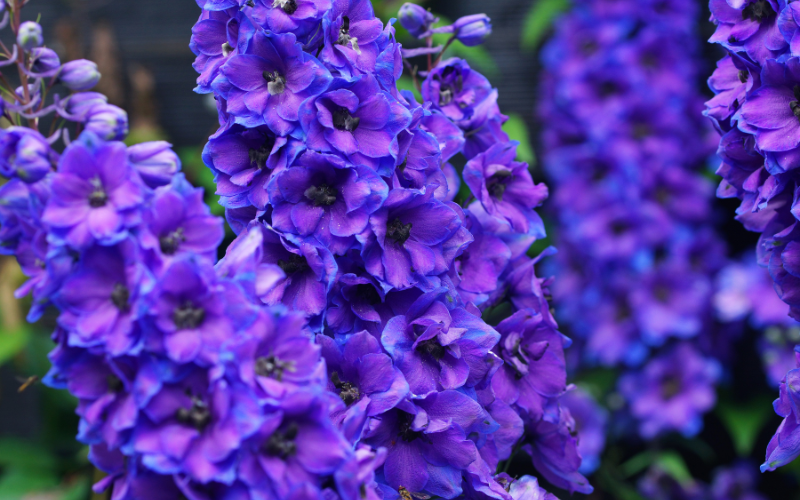
The Delphinium is a stunning flower. It is also known as Larkspur. Delphiniums come in a wide range of colors, including shades of blue, purple, pink, white, and occasionally even red. It is native to the northern hemisphere.
The Delphinium apart is its towering height, often reaching up to six feet or more, making it a standout feature in any landscape. This complicated structure adds an element of whimsy and charm to the flower, making it a favorite among both gardeners and florists alike.
| Scientific Name | Delphinium |
| Native Range | Eastern North America from Pennsylvania and Ohio south through the Appalachians into northern Alabama |
| Flowering Season | Late Spring to Late Summer |
Pasque

The Pasque flower is a charming and unique spring-blooming wildflower. It is also known as Pulsatilla. It is native to Europe and Asia. The sepals can range in color from shades of deep purple and blue to pink, white, or even red.
The flower is typically 1 to 2 inches (2.5 to 5 cm) in diameter. They can be found in meadows, rocky slopes, and alpine regions. They are well-adapted to cooler climates and can tolerate some harsh conditions.
| Scientific Name | Pulsatilla patens var. multifida |
| Native Range | Central and northern continental Europe and the British Isle |
| Flowering Season | Spring |
Lilac
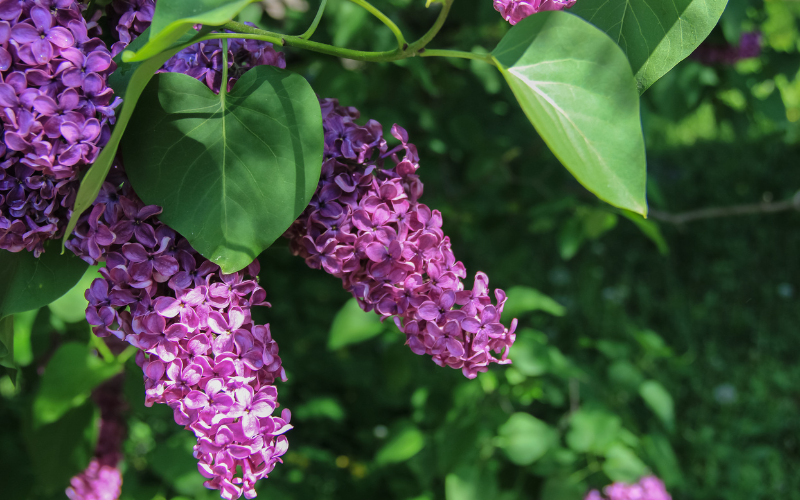
Lilac is a beautiful flower. The flowers are usually four-petaled and come in a range of colors, including shades of lavender, purple, pink, white, and even yellow. These stunning blooms are often associated with springtime.
Lilacs thrive in well-drained soil and full sunlight. They are relatively low-maintenance plants that require occasional pruning to maintain their shape and encourage new growth.
| Scientific Name | Syringa |
| Native Range | Europe and the others are from Asia |
| Flowering Season | Spring |
Purple Freesia

The Purple Freesia flower is charming and fragrant. It belongs to the Freesia family. The shades of purple can vary, ranging from pale lavender to deep violet. Freesia flowers, including the Purple Freesia, typically bloom in the spring or early summer.
Its long stems make it a versatile choice, allowing it to be showcased in bouquets, centerpieces, or even worn as a floral accessory. The purple freesia is a symbol of grace, purity, and friendship, making it a perfect choice for special occasions or as a heartfelt gift to express love and appreciation.
| Scientific Name | Freesia corymbosa |
| Native Range | South Africa |
| Flowering Season | Spring, Summer |
Catmint

Catmint is a beautiful flower. It is scientific name Nepeta cataria. It is native to Europe and Asia. The flowers can come in various colors, including shades of blue, purple, pink, and white. Catmint flowers typically bloom during the late spring and early summer.
Catmint is relatively easy to grow and care for. It prefers well-draining soil and full sun to light shade. Regular pruning, especially after the first flush of blooms, can help maintain its shape and encourage continued flowering.
| Scientific Name | Nepeta cataria |
| Native Range | Southern and eastern Europe, the Middle East, Central Asia, and parts of China |
| Flowering Season | Late Spring into Fall |
Lisianthus

Lisianthus is a stunning and delicate flower. It is also known as the “Texas bluebell” or “prairie gentian.” It is native to warm regions of North and South America. It comes in a variety of shades such as white, purple, blue, pink, and even bi-colored flowers.
Catmint is relatively easy to grow and care for. It prefers well-draining soil and full sun to light shade. Regular pruning, especially after the first flush of blooms, can help maintain its shape and encourage continued flowering.
| Scientific Name | Eustoma grandiflorum |
| Native Range | Northern Mexico North to Colorado and Nebraska |
| Flowering Season | Summer, Fall |
Morning glory
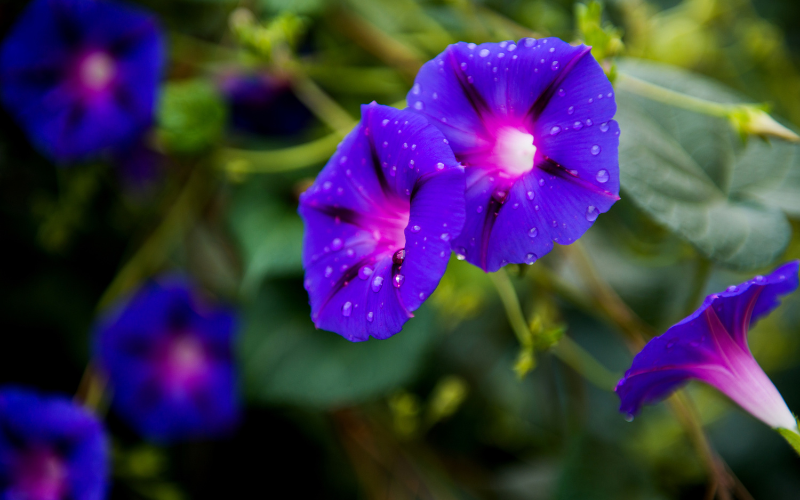
The morning glory is a vibrant flower. It is native to tropical and subtropical regions across the globe. The Flower can be found in a range of colors, including shades of blue, purple, pink, red, white, and even multicolored varieties.
Morning glory flowers bloom early in the morning, usually opening fully with the first light of day. They are popular choices for adding vertical interest to gardens, balconies, and other outdoor spaces. Some species are also grown as potted plants or used in hanging baskets.
| Scientific Name | Ipomoea |
| Native Range | Mexico and Central America |
| Flowering Season | Early Summer to the First Frost or Fall |
Wild Indigo
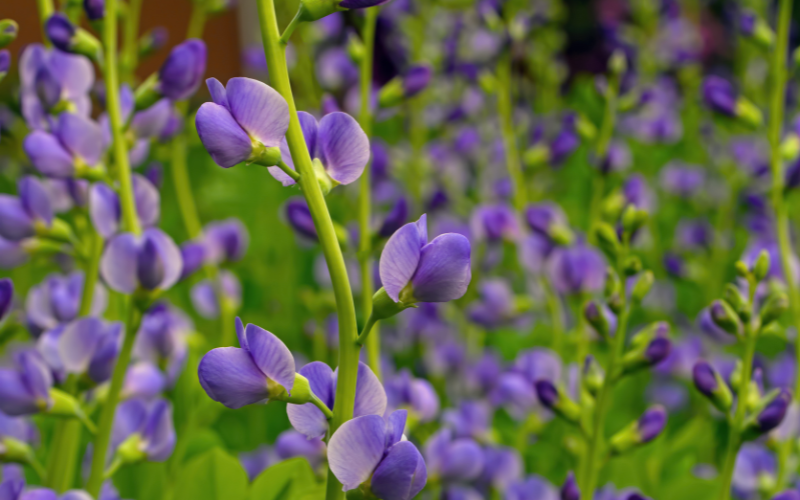
The wild indigo flower is a stunning and versatile plant. It is also known as baptisia. It is native to North America. They produce tall spikes of pea-like flowers that come in various colors such as blue, purple, white, and yellow. The flowers bloom in late spring to early summer.
The wild indigo flower offers numerous benefits to the ecosystem. The Native Americans have long utilized the roots and leaves of the Wild Indigo plant for various purposes, including treating fevers, and infections, and even as a natural dye.
| Scientific Name | Baptisia australis |
| Native Range | Central and Eastern North America |
| Flowering Season | Late Spring to Early Summer |
Chives
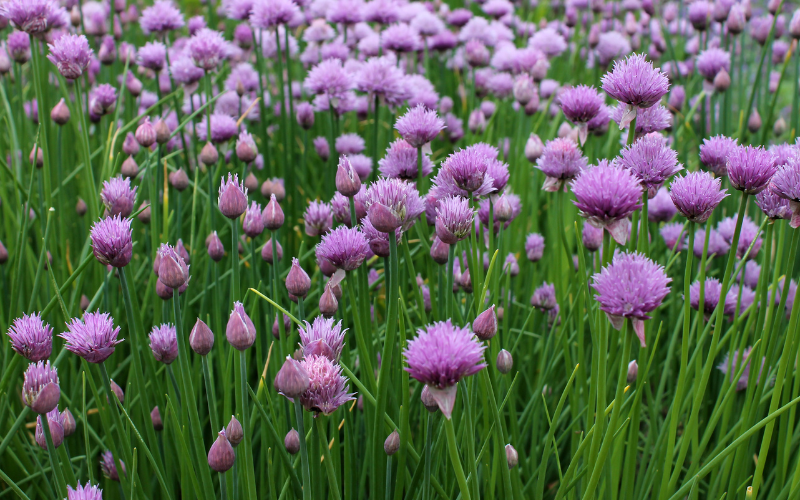
Chives is a beautiful flower. It is native to Europe, Asia, and North America. Chives typically produce small, round, purple-pink flowers in late spring to early summer. Chive leaves (stems) and flowers are edible.
The flowers have a milder onion flavor compared to the leaves, and they add a decorative touch to dishes. Chives are relatively easy to grow and require well-drained soil and full sun to partial shade.
| Scientific Name | Allium schoenoprasum |
| Native Range | Europe and Asia (and possibly North America) |
| Flowering Season | Late Spring and Summer |
Zinnia
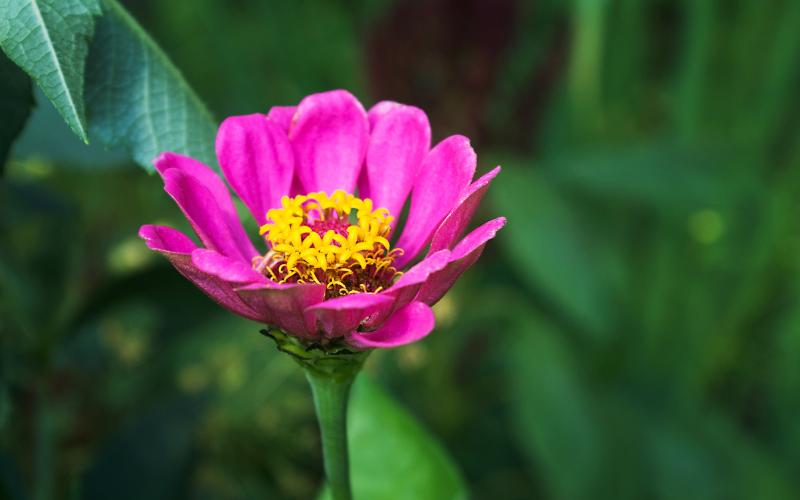
Zinnia is a beautiful flower. It is native to Mexico and South America. Zinnias come in a wide range of colors, including red, pink, orange, yellow, purple, and white. The plant’s height can vary depending on the variety, with some growing as tall as 3 feet (90 cm).
The flowers typically start flowering in late spring or early summer and continue to produce flowers until the first frost in the fall. They thrive in full sun, and they are well-suited for sunny garden beds and containers.
| Scientific Name | Zinnia |
| Native Range | Mexico |
| Flowering Season | Late spring until the first frost |
Wolf’s Bane

Wolf’s Bane is a lovely flower. It is scientifically known as Aconitum. It is native to Europe, North America, and Asia. The flowers can range in color from deep purple and blue to yellow and white.
It is typically blooms in late spring to early summer. In some cultures, Wolf’s Bane has been historically used in traditional medicine.
| Scientific Name | Aconitum |
| Native Range | Europe |
| Flowering Season | Mid summer until fall |
Hibiscus

Hibiscus is a charming flower. These flowers are known for their beauty and come in various colors, including red, pink, yellow, white, and orange. Hibiscus flowers are large and trumpet-shaped with five or more petals.
Hibiscus is the national flower of several countries, including Malaysia and South Korea. They thrive in warm and tropical climates but can also be grown indoors in containers.
| Scientific Name | Hibiscus rosa-sinensis |
| Native Range | Throughout the world |
| Flowering Season | Summer |
Sweet Rocket

Sweet Rocket is a beautiful flower. It is scientifically known as Hesperis matronalis. It is native to Europe and Asia. The flowers come in shades of purple, pink, and white. Sweet Rocket can reach a height of 2 to 3 feet (60 to 90 centimeters).
Sweet Rocket prefers well-draining soil and thrives in partial shade to full sun. It’s a relatively low-maintenance plant that self-seeds readily.
| Scientific Name | Hesperis matronalis |
| Native Range | Europe |
| Flowering Season | Late spring to midsummer |
Russian Sage

The Russian Sage flower is a gorgeous flower. It is scientifically known as Perovskia atriplicifolia. It is native to Central Asia. The plant can reach a height of 3 to 5 feet (90 to 150 centimeters).
Russian Sage typically blooms from mid to late summer. It thrives in full sun and well-draining soil. It requires minimal watering and can tolerate poor soil conditions, making it a perfect choice for busy gardeners.
| Scientific Name | Perovskia atriplicifolia |
| Native Range | Asia |
| Flowering Season | Mid-Summer into Fall |
Sweet Pea
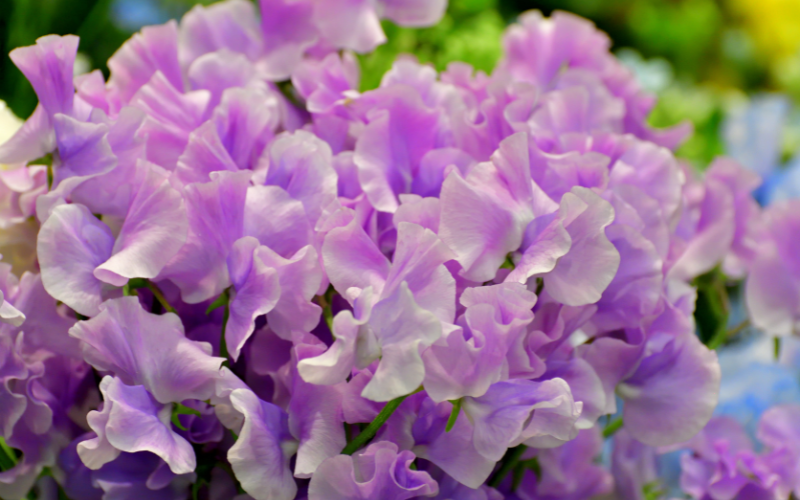
Sweet Pea is a stunning flower. It is native to the Mediterranean region. The flowers are usually about 1 inch (2.5 centimeters) in diameter. Sweet Pea come in a wide range of colors, including pink, purple, red, and white.
They typically bloom in late spring and continue through the summer months. It thrives in full sun to partial shade. They prefer well-drained soil and benefit from regular watering.
| Scientific Name | Lathyrus odoratus |
| Native Range | Sicily, Southern Italy and the Aegean Islands |
| Flowering Season | Late Spring to Summer |
Peony
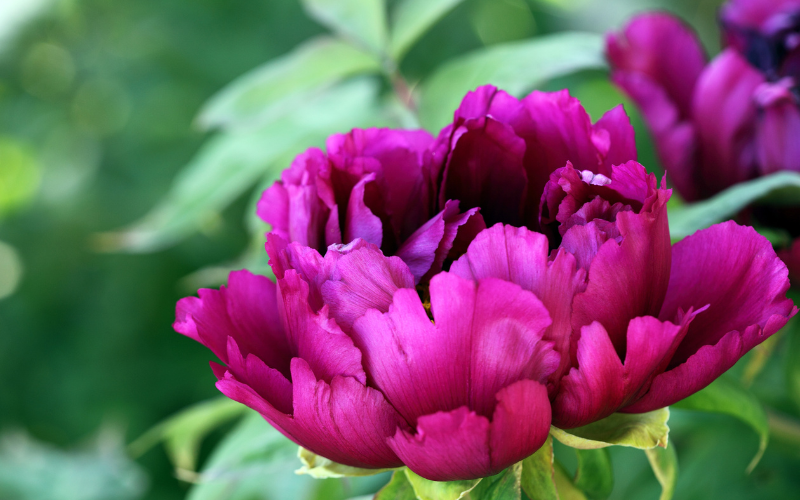
A peony is a beautiful flower. It is scientifically known as Paeonia. It is native to Asia. Peonies come in a variety of colors, including white, pink, red, coral, and even yellow. Peonies typically bloom in late spring to early summer.
It thrives in well-drained, fertile soil with good moisture retention. They prefer full sun to partial shade. Peonies require minimal maintenance once established.
| Scientific Name | Paeonia |
| Native Range | Asia |
| Flowering Season | Late Spring to Early Summer |
Rose of Sharon
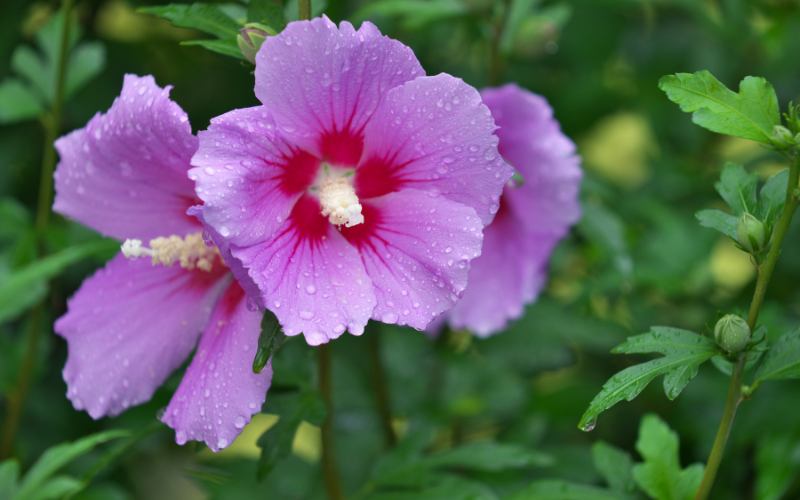
The Rose of Sharon is a stunning flower. It is scientifically known as Hibiscus syriacus. It is native to Asia. The flowers of the Rose of Sharon come in a variety of colors, including white, pink, purple, and blue.
They typically appear from mid-summer to early fall. It thrives in a wide range of soil types. The flowers prefer full sun to light shade for optimal flowering.
| Scientific Name | Hibiscus syriacus |
| Native Range | Asia |
| Flowering Season | Late summer to early fall |
Pincushion

The pincushion is a mesmerizing and unique flower. It is scientifically known as Scabiosa. The flowers come in a wide range of colors, including shades of pink, purple, blue, and white.
The plant’s height can vary by species and cultivar, but it generally reaches between 12 to 36 inches (30 to 90 cm). Pincushion Flowers typically bloom from late spring through summer and may continue flowering into early fall.
| Scientific Name | Scabiosa japonica |
| Native Range | Europe, Africa, and Western Asia |
| Flowering Season | Late spring to mid-summer |
Pigeon Berry
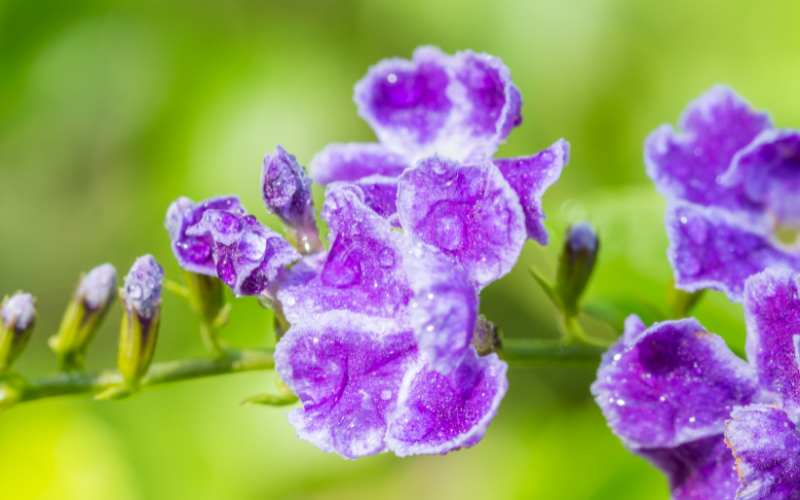
The Pigeon Berry is a beautiful flower. It is scientifically known as Rivina humilis. It is native to America. Pigeon Berry produces small, tubular flowers that are typically lavender to violet-blue in color.
It typically blooms during the warmer months of the year, from late spring through summer and into fall. Pigeon Berry is a plant that can grow to a height of 6 to 15 feet (1.8 to 4.5 meters) or even taller.
| Scientific Name | Duranta repens |
| Native Range | United States |
| Flowering Season | Summer to Fall |
Question & Answer
What is the most popular purple flower?
The lavender (Lavandula angustifolia) has become known as the most popular purple flower.
What purple flower smells strong?
One purple flower that is known for its strong fragrance is the Lavender.
What purple flower means?
The purple flower has long been associated with royalty, power, and luxury. Purple flowers can symbolize nobility, elegance, and sophistication.
What is a large purple flower?
One large purple flower is the Giant Allium (Allium giganteum). It is known for its impressive size and vibrant purple color.
Are purple flowers rare?
Purple flowers are not necessarily rare, as there are various species of flowers that naturally occur in shades of purple.
